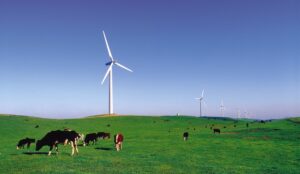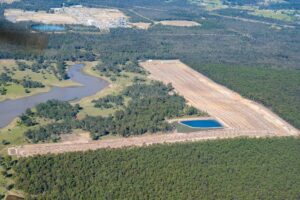Tony Abbott’s handpicked head of the panel reviewing Australia’s renewable energy target, the self-avowed climate “sceptic” Dick Warburton, is no fan of renewable energy. In an article co-authored for Quadrant in 2011, Warburton insisted that nuclear energy was the only alternative to fossil fuel generation.
 The two-part series for the conservative magazine – co-authored by Warburton along with poet and accountant Geoffrey Lehmann and Resmed founder Peter Farrell – is an eye-opening compendium of the major arguments that climate science deniers and fossil fuel lobbyists have ever thrown at climate science, against carbon pricing and against renewable energy.
The two-part series for the conservative magazine – co-authored by Warburton along with poet and accountant Geoffrey Lehmann and Resmed founder Peter Farrell – is an eye-opening compendium of the major arguments that climate science deniers and fossil fuel lobbyists have ever thrown at climate science, against carbon pricing and against renewable energy.
The title of the two-part series was “An intelligent voter’s guide to global warming” (you can find Part 1 here and Part II here), and the authors pretended to “provide basic information often missing from the debate.” In fact, it is a collection of scientific howlers normally only found in right-wing blogs.
This, though, is the paragraph that might interest those likely to feel the impact of the decisions made by the RET review panel that Warburton now heads:
“Except for nuclear power, there are no straightforward strategies for reducing dependence on fossil fuels without large economic costs. Wind and solar generators often cannot function when needed. Wind machines operate at only about 25 per cent capacity in the UK. Even when the wind is blowing, “back-up capacity, usually gas-fired … had to be kept running, using fuel, generating steam, emitting CO2, ready to ramp up its turbines the moment sufficient supply from the wind machines stopped coming”. Two main obstacles with renewables are the difficulty of establishing transmission lines from sunny or windy places to where the power is needed and the absence of utility-scale storage technology for intermittent renewable energies. A US comparison estimated the following electricity generation costs per kilowatt hour: hydroelectric $0.03; nuclear and coal $0.04; wind power $0.08; natural gas $0.10 (other estimates for gas suggest about $0.04); solar power (construction costs only, ignoring production costs for which reliable data were unavailable) $0.22.”
And, a little later….
“The only current viable alternative to burning fossil fuels is to go nuclear. Although current known reserves of uranium are limited, it is likely that by developing new nuclear technologies and with new sources of uranium, humanity’s electricity needs could be satisfied by nuclear power for many hundreds of years or more.”
Fantastic. In the true sense of the word. One hopes that Warburton has caught up a little on the various technology costs. In the US, where his electricity generation costs are cited, nuclear is four times the price that he quotes. In fact, you would have to go back many, many years to find a time when it was just 4c/kWh.
Ditto with solar. Solar PV, including production costs (for which there is plenty of reliable data), costs around half that quoted by Warburton in the US. Some recent solar PV power purchase contracts, aided by a tax credit, have been at one-quarter of the price he quoted. Wind, according to General Electric, the largest provider of power equipment, is also around half of that quoted by Warburton, and new coal – according to investment bank Citigroup – is also four times the price quoted by Warburton. Even fracked gas is being priced out of the market by utility-scale solar. As Citigroup noted, quite bluntly: Nuclear and coal are not competitive with renewables on cost.
One also assumes that Warburton is aware that the cost of energy storage is falling, and likely to follow the pathway of solar, as Morgan Stanley has pointed out. This is one reason why grid operators in WA and Queensland are looking to reduce their poles and wires delivering centralised fossil fuels, because they cannot compete economically with solar and storage any more.
Warburton can catch up with Australian technology cost estimates at the Bureau of Resource and Energy Economics, which recently doubled its estimated costs of nuclear and dramatically reduced its estimates on the cost of solar.
One also hopes that Warburton is disabused of his idea that “fossil fuel” generation is left running, and polluting, waiting for the sun to stop shining and the wind to stop blowing. Such nonsense is only propagated by the most infamous of blogs haunted by climate science deniers, nuclear boosters and the anti-wind brigade. (Who are often the very same people).
A report by the US Department of Energy’s National Renewable Energy Laboratory puts this myth to rest. Those grids that have high renewables are actually using less fast-response peaking power than those relying almost exclusively on inflexible coal or nuclear generators.
The Quadrant article has some other stunning statements. Just to make their lack of understanding about electricity markets complete, the authors contend …
Energy demand is “pretty inelastic” because people will not choose other goods or services to substitute for energy that keeps them warm or cool, cooks their food and provides transportation.
I wonder how, then, they explain the fact that in Australia and many other countries, demand is falling – with average household demand in Australia falling 10 per cent in a single year in some states. This is not just because they are becoming more efficient, but also because they have found cheaper alternatives … mostly rooftop solar.
And then there is this, on carbon dioxide …
“Carbon in the form of airborne soot is a pollutant. Carbon dioxide is not ….. Carbon dioxide is a crop nutrient without which we would simply perish.”
As we have mentioned before, Warburton is supported in his RET review by fossil fuel lobbyist Brian Fisher, and Shirley In’t Veld, the former head of Verve Energy, who has also expressed a disdain for renewable policies in the past.
But the question that the renewables industry will be asking is this: Given that Warburton says he has investigated the climate science and declares that climate scientists do not know what they are talking about, what are the chances that he will accept the evidence from the renewable energy industry? Ideology, as we have seen with the media and the government since the September poll, is a mighty powerful editor.







